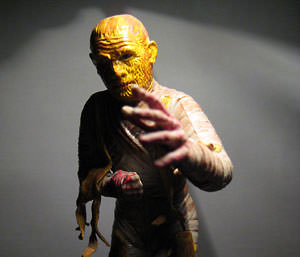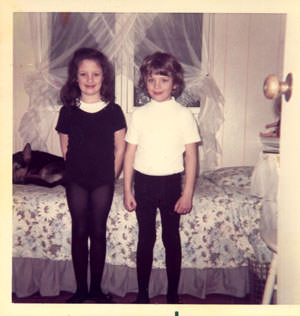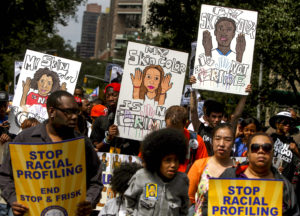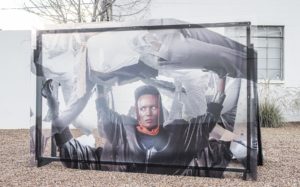Who’s Your Mummy?
Whether the Mummy or Frankenstein’s Monster, there was no getting around the fact that these poor souls, many of them merely starved for love and companionship, were innocent victims of either intolerance or blatant discrimination from the dominant culture.Whether the Mummy or Frankenstein’s Monster, there was no getting around the fact that these poor souls were innocent victims of the dominant culture.
The strip mall was configured like a wide V and was called Victory Square, the shape suggested by its title being the lazy sort of half-truth that made me wonder why anybody would ever trust a grown-up to tell the truth about anything. This was in Forked River, N.J, and I was there every Wednesday and Friday afternoon in the fall of 1971 for ballet class with my twin sister, Dawn. We were 6 years old and I was the only boy in the class, except for Ernie, a puny kid in leg braces who always wore a desperate expression on his face and, although dressed in a leotard, never danced. Instead, he merely moaned and periodically let out a pitiful little cry when the dance instructor’s assistant manipulated the persistent toothaches that were his knees and elbows, which I now assume must’ve been atrophied by some sort of muscular dystrophy. I liked having Ernie around, if only because without him it would’ve been impossible for me to fool myself into imagining that I possessed a stunning masculine grace while executing the goofy faux-karate moves I substituted in place of the pirouettes and side leaps practiced by the rest of the class.
“Where the hell are you going before class starts?” asked my mother, dropping herself into the driver’s seat of our blue Dodge Dart and jamming the cigarette lighter hard into the dashboard with her thumb. “And how is it that you’re on time?” she asked my sister, pulling a menthol True Green out of its pack and screwing it into her teeth. “I drop you both off at the same goddamn time!”
Dawn and I were sitting in the back seat with our ballet cases resting on our laps, having been commanded there only moments earlier by our mother who had remained behind to speak with Ms. Jenny, who had some concerns regarding my tardiness. “Some concerns?” I wanted to blurt out before being shoved out the door and pointed toward the parking lot. “I’m wearing a skintight polyester white turtleneck that snaps between my legs!” I imagined myself shouting. “My older brother gets guitar lessons, wears sneakers and jeans and an Italian horn necklace, carries a switchblade comb and throws his shit into a gig bag like Pete Townshend, while I’m locked in the bathroom hunched over in front of the toilet holding my breath and crossing my eyes and cinching myself up like Shirley Temple — concerns?! Let me tell you who might have some concerns!”

The truth of the matter, of course, was that I liked ballet class, not so much because of the dainty little slippers I got to wear or because of all the pliés and toe pointing I got to do, but rather because I found it deeply gratifying to know that I was doing something that required real guts to do. In fact, considering the laughter and fake throw-up noises made by my friends upon hearing of my enrollment in the class, dancing ballet was a little bit like getting to live inside fire twice a week and emerging from the flames completely unscathed by the experience. It was a new sort of heroism that I was anxious to explore, having absolutely no interest in traversing the well-worn paths of gender competency as endured by every little boy force-fed misogyny and sports-infused machismo since time immemorial. After seeing my brother drop a Frisbee once and then spend the rest of the afternoon sobbing inside a pile of damp leaves in the backyard, I was determined to chart a different course into manhood. The way I figured it, anybody could learn how to throw a lousy football or spit on a girl, but try working on an arabesque with microfibers riding up your ass crack while a middle-aged woman in Capezio shoes wrestles with a crippled child who is screaming bloody murder in the corner of the room, the whole time surrounded by floor-to-ceiling mirrors megaphoning an inferred sissiness that an entire sub-industry of psychiatry and theistic intolerance has been trying to remedy with shock treatment and threats of eternal damnation for generations — that will make you bulletproof. That will make you dangerous.
“He can’t get past the hobby shop window,” sighed my sister in answer to my mother’s question. “He’s in love with that stupid mummy model.”
“I told you to forget about that stinkin’ model!” said my mother, practically slapping herself on the forehead like an exasperated cartoon character. “For the hundredth time, you’re not getting it! It’s too expensive!”
The mummy model that she and my sister were talking about was built from an original 1963 Aurora Model Kit and displayed in the window of Master Hobbies, which was two doors down from the dance studio. Each Wednesday and Friday my mother would pull up to Butler’s Drugstore and drop Dawn and me off, saying that she’d be back in an hour. Then she’d drive away. We would then walk in the direction of the Dance Expressions studio, located at the far end of the alley created by the incomplete convergence of Victory Square at its V. We would enter the alley and, yes, I would pause to press my nose up against the window at Master Hobbies and marvel at the 9-inch plastic mummy on the other side of the glass and my sister would continue on alone, past the pizza place and into the dance studio door.Then there would just be me and the faint chirping of dying frogs from the far end of the alley where the sidewalk came to a dead end at a green wall of crumbling slate shingles.
It happened at the close of every summer, this huge migratory die-off of frogs. Beginning sometime in late August, just as the great majority of the frogs living in a nearby lagoon reached maturity, they would hop through the weeds in the middle of the night and flush out the massive indigenous cricket population and drive it into the shopping center, past the drugstore and past the hobby shop and past the pizza place and past the dance studio, and slaughter it against the green wall. Then, once all the crickets had been chewed into tapioca, the frogs would gorge themselves on disoriented mosquito hawks and palsied moths and black beetles driven mad and rendered flightless by the caged floodlight bolted to the wall above. Glutted with the spoils of their conquest, the frogs would notice the approaching dawn and begin wearily throwing themselves forward into the crumbling slate shingles of the dead end, over and over again, as if the real world had absolutely no precedence over the self-edifying folly of their wills.
After several weeks of this, the lagoon would eventually be empty of anything larger than a water strider, the forest would be shimmering with the exalted symphony of happy crickets and the alley would be fetid with the dehydrated bodies of frogs, many of them little more than flattened patties of amphibious scrotal jerky wrapped stiffly around tiny skeletons frozen in spirited jazz poses of exultation.
Of victory!
What captivated me most about the mummy model wasn’t its wicked cool ugliness, nor was it the exquisite paint job and the ghoulish enthusiasm with which the artist applied blood to the monster’s hands and closed right eye, but rather it was my own moral sense of fairness and the affinity for anti-establishmentarianism that seemed to come so naturally to me. After all, whether one was considering the unique circumstances of the Mummy or Frankenstein’s Monster or the Creature from the Black Lagoon or the Phantom of the Opera or the Hunchback of Notre Dame or King Kong, there was no getting around the fact that these poor souls, many of them merely starved for love and companionship, were innocent victims of either intolerance or blatant discrimination from the dominant culture. Simply put, those monsters who weren’t trying to gain acceptance from the status quo were merely trying to exclude themselves from society’s thuggish judgment and demand for acquiescence, both positions reflecting, I would find out later, the completely coherent and morally cogent opinions of Dr. Martin Luther King Jr. and Malcolm X.
And Jack Kerouac and Mario Savio. And Kate Millett and Geronimo. And Bugs Bunny and Noam Chomsky.
In fact, what made monsters menacing to the world was either their inability — or their ballsy refusal! — to conform to stringently myopic doctrines of behavior and belief, their hair-raising spookiness coming from the wretched fight that they usually put up before being violently killed by, essentially, popular opinion.
In the end, my stepfather bought me the mummy model, believing it to be the perfect antidote against my turning gay one fiendish relevé at a time.
Your support matters…Independent journalism is under threat and overshadowed by heavily funded mainstream media.
You can help level the playing field. Become a member.
Your tax-deductible contribution keeps us digging beneath the headlines to give you thought-provoking, investigative reporting and analysis that unearths what's really happening- without compromise.
Give today to support our courageous, independent journalists.









You need to be a supporter to comment.
There are currently no responses to this article.
Be the first to respond.